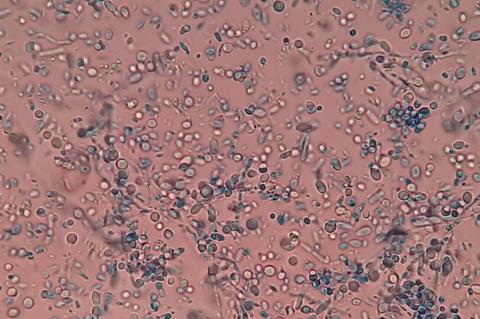Malassezia, a fungus linked to various skin disorders, has recently been implicated in cancer development. Psoriasis, a chronic skin condition driven by genetic and environmental factors, exhibits significant microbial imbalance, where Malassezia restricta and M. globosa are prevalent in lesions.

Given its rising antifungal resistance and toxicity, discovering novel compounds targeting Malassezia is imperative. In this context, the research led by Dr. Qiming Wang (Hebei University) and published in Mycology, highlights the urgency for innovative therapies.
READ MORE: Skin fungus colonization accelerates breast cancer tumor growth
READ MORE: Fungi dwelling on human skin may provide new antibiotics
Oxymatrine, a bioactive compound derived from the Chinese herb Sophora flavescens, has been clinically used in psoriasis treatment. Compared to conventional antifungals, it demonstrates lower toxicity, milder side effects, and potent inhibitory activity against Malassezia biofilm formation.
Dual-action mechanism
“Oxymatrine not only controls Malassezia overgrowth but also manages psoriasis symptoms, offering a dual-action mechanism for safer and more effective therapy,” said Professor Qiming Wang. Further studies reveal its ability to suppress inflammatory responses in psoriatic lesions, alleviating skin damage and reducing apoptosis.
“This anti-inflammatory effect synergizes with its antifungal properties, providing a comprehensive therapeutic strategy,” explained Professor Wang. The findings position oxymatrine as a promising solution for addressing both microbial dysbiosis and inflammation in psoriasis.
This study was supported by the National Natural Science Foundation of China (31961133020 and 32370015) and the Advanced Talents Incubation Program of Hebei University (521000981388).







No comments yet